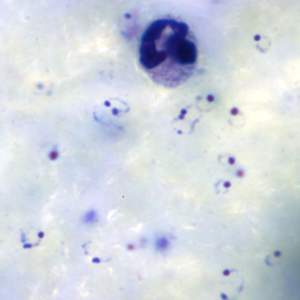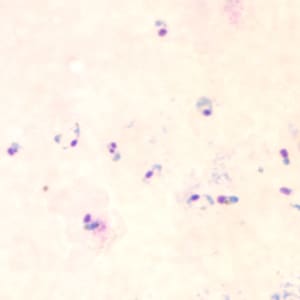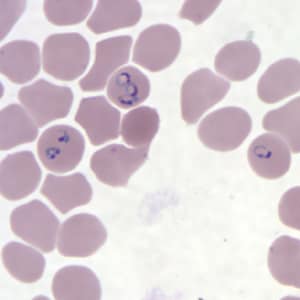Plasmodium Cell Structure
Plasmodium as a genus are small protozoans that exist as unicellular organisms. For an example of their size, the species P. falciparum are on average “1/5 the diameter of a red blood cell” , making them approximately 1.44 µm in diameter. P. falciparum has been found to have a genome consisting of 14 chromosomes with a total of 5369 genes.
 Rings of P. falciparum in a thick blood smear
Rings of P. falciparum in a thick blood smear
Plasmodium are not bacteria and as such do not have a uniform gram stain pattern, for example P. vivax is known to display a gram positive or gram negative stain depending on the conditions. Plasmodium have a fairly typical eukaryote cell membrane, but also have several surface structures including rhoptries containing parasite proteins and micronemes that contain specialized proteins used for adhesion to host cell bodies as well as for motility. These surface structures are actually semi protruding organelles. Rings of P. faciparum in a thick blood smear
Rings of P. faciparum in a thick blood smear
Plasmodium is not motile in all of its life stages, but when it is it relies on external actin filaments to do perform taxis.
 Rings of P. falciparum in a thin blood smear
Rings of P. falciparum in a thin blood smear
Images of P. falciparum found here